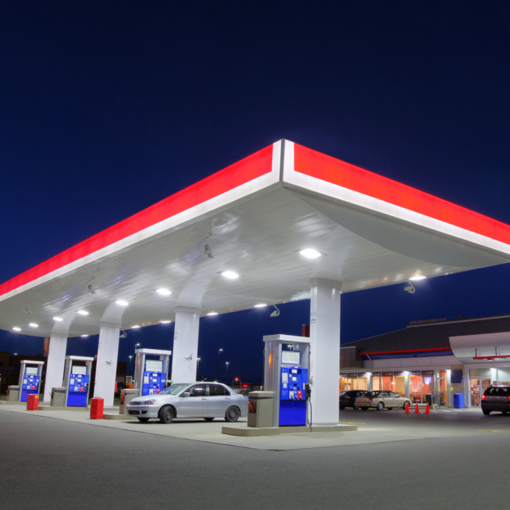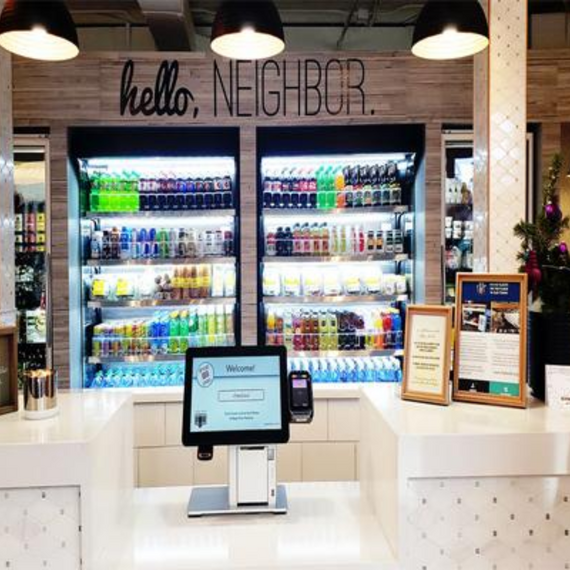
The future of contactless payments at the pump
The introduction of EMV and contactless technology is transforming card present payments. But what does that mean for gas stations, where installing the appropriate payment terminals is more complex?
Cash as a payment method isn’t disappearing anytime soon. But consumers are carrying less of it. In 2018, the average American had $42 in their wallet — $8 less than they did in 2017.
In the meantime, more people are warming up to alternative payments. 61% of US consumers now prefer to shop in places that accept contactless. 79% want to see the $50 spending limit raised. And 84% think paying with their smartphone or smartwatch is more convenient than using cash.
It’s clear that consumers want more payment choices. And this extends to paying at the fuel pump. But while merchants, including gas station owners, are keen to give their customers new ways to pay, there are a number of challenges they need to overcome.
In a recent whitepaper, we looked at the main issues gas station operators are facing when implementing alternative payment methods at the pump. This is what we discovered.
From dip-and-go to chip-and-pin and beyond
The US used to lag behind other countries when it came to contactless adoption, but it’s catching up fast.
70% of terminals at bricks-and-mortar locations are now contactless-enabled. And, with two out of every five cards expected to be contactless by 2021, consumers will inevitably become more comfortable with the technology. Which means they’ll start expecting to be able to pay with it whenever they please.
As Toronto-Dominion bank’s head of US cards and merchant services Julie Pukas puts it:
“A few years from now, dipping may seem like something we did a long time ago. Once we start seeing consumers use these cards every day in a transit area or, for example, in surrounding merchants, I think it will be a very easy adoption for customers and they will really like the speed.”
But while the US payments ecosystem’s future is looking increasingly contactless, gas station operators are finding it harder than other merchants to adapt.
Cost, skill, legacy: the barriers to alternative payments adoption at the pump
Last year, the Capra Consulting Group reckoned 90% of gas station operators would upgrade their payment terminals by the end of 2018. But this figure only accounted for in-store locations. Payments at the pump — the preferred payment method for 72% of Americans — are a different story. Capra Consulting Group partner Terry Mahoney expects many operators still won’t have upgraded come October 2020.
More to the point, these figures only account for chip-and-pin-enabled terminals. Contactless-ready terminals are far fewer. Only 300 out of Chevron’s 8,000 gas stations, for instance, accept mobile payments. And, overall, less than 1% of gas pumps have contactless capability.
Unsurprisingly, the biggest hurdle is cost. At approximately $30,000 per gas station — between $4 to $6 billion in total — the price of an upgrade can exceed what some operators make in a year.
But legacy infrastructure may also prove problematic. Upgrading is more difficult if a pump can’t accept a standard kit, for instance because the wiring isn’t fit for purpose. In this case, additional labor and equipment will also be required, which means the cost of an upgrade would skyrocket.
Of course, it goes without saying that upgrades have to be handled by skilled technicians. Seeing as there are about half a million fuel pumps that need upgrading, finding someone who is available to do the job may take a while.
To upgrade or not to upgrade: the October 2020 EMV deadline
Given the cost, complexity and potential difficulties finding skilled technicians, it’s understandable that many gas station operators — particularly smaller independents — would adopt a ‘wait-and-see’ approach to upgrading payment systems at the pump. But events may soon force their hand.
As from October 2020, liability for fraudulent transactions at the pump will rest with the weakest link in the payment chain. Once this happens, all operators who don’t have chip-and-pin-enabled terminals will have to cover fraudulent losses, which will eat into already narrow profit margins.
Seeing as chip-and-pin and contactless upgrades have similar challenges, upgrading both at once makes perfect sense. Pumps last about 15 years. So, for operators going to the trouble of upgrading, it’s worth choosing the most advanced system possible in order to future-proof.
More importantly, upgrading to chip-and-pin first and switching to contactless-enabled terminals later is more expensive than doing both at once.
But it’s not just a question of unlocking cost savings and minimizing business losses.
Thinking outside the box
With more and more consumers expecting to pay using their preferred method, accepting contactless and other alternative payments at the pump is a significant competitive advantage. Merchants, including gas station operators, are well aware of this. And, for this reason, 74% plan to start accepting new payment methods in the next two years.
At 33% and 23% respectively, mobile wallets and contactless cards are at the top of the list of payment methods merchants want to start accepting. That said, larger operators have also been looking at solutions that bypass the need for expensive gas pump retrofitting.
ExxonMobil and Shell have both launched apps that allow customers to pay for fuel without leaving their car. Using geolocation, scanning a QR code or, in the case of Shell’s app, inputting a code, customers can select their pump, fill up and pay via their mobile wallet.
Similarly, Chase has launched an app, called Chase Pay, which consumers can currently use at Shell and 76® stations, with more chains set to join in future. Aside from making payment at the pump easier, these apps also link to loyalty programs, earning customers loyalty points and money off their fuel bills in the bargain.
In summary
Gas station operators are facing a critical junction. Customers increasingly expect to pay using their preferred payment method. And this extends to payment at the pump.
Cost, infrastructural and technical challenges are daunting for large chains, let alone independents. That said, offering more payment choices will undoubtedly pay off in the long term.
Accepting alternative payments probably won’t make the act of fuelling up more enjoyable. But it’ll make the experience quicker, safer and more convenient. Ultimately, that’s better for consumers. And better for gas station operators too.
Want more insights on the future of gas stations in 2019 and beyond? Download our whitepaper US independent gas station retailers: Payments and the opportunities for growth in 2019




